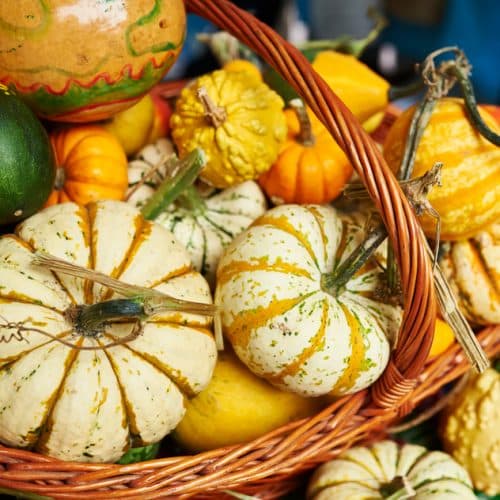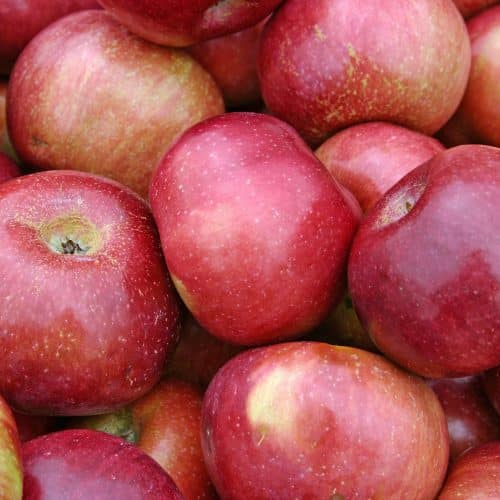
Robyn Flipse, MS. MA, RDN
Consultant to the Calorie Control Council
Even if the weather doesn’t vary much where you live, you can use the seasonal changes on the calendar to reboot your diet for better health. All it takes is expanding the colors on your plate to feature whatever is being harvested. I mark the arrival of autumn in the produce section of my grocery store by the orange-hued butternut squash, navel oranges and Fuyu persimmons that suddenly appear alongside all those huge bins of pumpkins. It’s a sure sign that summer is over!
According to the American Heart Association, eating a wide variety of different colored fruits and vegetables is the best way to get all of the essential nutrients you need to lower your risk for preventable diseases, such as heart disease, high blood pressure and certain types of cancer. To reach the goals outlined in the 2015-2020 Dietary Guidelines for Americans, you should consume 1-2 cups of fruits per day and 1-3 cups of vegetables per day, based on your age and energy requirements. Reaching those goals is easier if you remember you can include all forms of fruits and vegetables – fresh, frozen, canned, dried and 100% juice.
Thanks to rapid transportation, you can find fresh seasonal produce no matter where you live. In the fall, that includes the parsnips grown in Oregon and the Key limes from Florida. Even the internationally tagged Swiss chard, Brussels sprouts and Asian pears are all grown in the U.S. and are being brought to market now, so be sure to look for them in your store. For complete lists of what’s in season throughout the entire year, check Fruits and Vegetables More Matters What Fruits and Vegetables Are In Season?
Let the Holidays Lead the Way to More Produce in Your Diet
Incorporating more fall produce in your diet is easy if you think about the most popular dishes on your Thanksgiving menu. Do sweet potato casserole, cranberry sauce, and apple pie come to mind? There’s no reason to reserve them just for special occasions, and no reason to prepare them with all of the added sugars typically called for in indulgent holiday recipes. Many of your family favorites can be made using a low-calorie sweetener, like aspartame, to replace some of the sugar. You can find tried-and-true recipes on the websites for your favorite brand of low-calorie sweetener or experiment on your own. The results should look and taste the same as the originals but will be lower in added sugars and calories, which is good for the whole family.
How to Make the Tastes of the Season Last
Of course, pumpkin isn’t just for pie. I like to stock up on canned pumpkin puree this time of year so I can make these moist and delicious Raisin-Pumpkin Muffins in the winter months ahead. When you eat them for breakfast you can feel good about including your first serving of vegetables for the day in your first meal of the day! Other great uses for canned pumpkin are in smoothies, soups and chili. I also load my freezer with bags of fresh cranberries every fall so I can add them to quick breads when they are no longer in season and to this Cranberry Salad. It adds color and crunch to the plate thanks to the celery and walnuts. And if you haven’t tried pomegranate arils, the seed pod inside a whole pomegranate, this is the time to buy them. They also freeze well and can add some sparkle and extra vitamin C to any salad you serve.
When you go apple picking or buy a bushel of apples at a farmer’s market, making a big batch of this Baked Cinnamon Applesauce is a great way to enjoy them well into spring. Just freeze the applesauce in one-quart zip-top freezer bags and then thaw it to serve whenever you want it. Another great way to use up those apples and add more vegetables to your meals (cabbage, carrots and bell peppers) is with this Tangy Apple Slaw. In my house, a grilled cheese sandwich is the preferred side dish to on a chilly autumn afternoon.
The leaves on the trees aren’t the only thing that change color in the fall. The fruits and vegetables on your plate should be changing color, too. Here’s to another flavorful season!
 Robyn Flipse, MS, MA, RDN is a registered dietitian, cultural anthropologist and scientific advisor to the Calorie Control Council, whose 30+ year career includes maintaining a busy nutrition counseling practice, teaching food and nutrition courses at the university level, and authoring 2 popular diet books and numerous articles and blogs on health and fitness. Her ability to make sense out of confusing and sometimes controversial nutrition news has made her a frequent guest on major media outlets, including CNBC, FOX News and USA Today. Her passion is communicating practical nutrition information that empowers people to make the best food decisions they can in their everyday diets. Reach her on Twitter @EverydayRD and check out her blog The Everyday RD.
Robyn Flipse, MS, MA, RDN is a registered dietitian, cultural anthropologist and scientific advisor to the Calorie Control Council, whose 30+ year career includes maintaining a busy nutrition counseling practice, teaching food and nutrition courses at the university level, and authoring 2 popular diet books and numerous articles and blogs on health and fitness. Her ability to make sense out of confusing and sometimes controversial nutrition news has made her a frequent guest on major media outlets, including CNBC, FOX News and USA Today. Her passion is communicating practical nutrition information that empowers people to make the best food decisions they can in their everyday diets. Reach her on Twitter @EverydayRD and check out her blog The Everyday RD.




